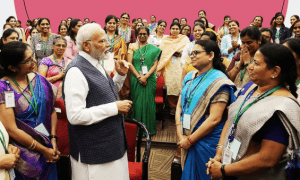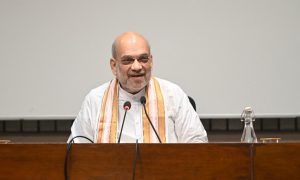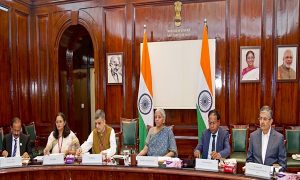The Central government has given its approval for inviting the expression of interest for installation of 1000 MWh Battery Energy Storage System (BESS) as a pilot project, providing a major boost towards achieving Renewable Energy targets of India.
The decision comes as a big support to the Ministry of New and renewable which intends to achieve 450 GW renewable energy target by 2030.
The government has allowed the state-owned Solar Energy Corp of India (SECI) to call expressions of interest (EoI) for setting up a 1 gigawatt-hour (GWh) grid-scale battery storage system.
SECI, a CPSU under the Ministry of New and renewable energy, has called for the expression of interest for the procurement of 1000 MWh BESS. This will be published along with the RFS bid document and the draft comprehensive guideline for procurement and utilization of BESS as a part of generation, transmission and distribution assets and with all ancillary services.
After the government’s recent approval, the EoI will be discussed in a pre-bid conference scheduled on 28th October 2021 at 4 pm.
India’s plans to use energy storage system in 6 Areas, mainly:
- In a push towards “Green Energy” goals, the government intends to use energy storage system for integration of India’s Renewable energy with the country’s power system.
- Then, the energy storage system will be used as a grid element to maximize the use of the transmission system and strengthen grid stability. The objective is to save investment in the augmentation of transmission infrastructure.
- Energy Storage will also be useful as an asset to balance services and for flexible operation. The system operator or load dispatchers (RLDCs and SLDCs) may use these storage systems for frequency control and balancing services to manage the inherent uncertainty/variations in the load due to un-generation.
- Further, Energy Storage will be manoeuvred for the distribution system. It may be placed at the load centre to manage its peak load and other obligations.
- Under business cases, India plans to use the energy storage system developer as a merchant capacity and thereby sell it in the power market.
- Moreover, it may be utilized for any other future business models as a combination of all the above.
India’s Renewable Energy goals are “need of the hour”
Currently, India is conducting the world’s largest clean energy programme, under which it aims to achieve 175 GW of renewable capacity, including 100GW of solar power by 2022.
The government plans to call bids for setting up around 4GWh of the grid-scale battery storage system at the regional load dispatch centres.
In addition to this, state-run NTPC Ltd has also rolled out a global tender for setting up 1GWh grid-scale battery storage system. According to the Central Electricity Authority of India, there will be a need for 27GW of grid-scale battery energy storage systems by 2030 with four hours of storage.
In Future: Hydro-pump storage schemes
Apart from Battery Energy Storage systems, there is also growing traction for hydropower projects among Indian clean energy majors.
Here, the country aims to use cheap green power during off-peak hours to raise water to a height and then release it into a lower reservoir to generate electricity. This will help India with cutting the cost of energy generation while gaining the maximum out of Green Energy goals.
Till date, India has crossed 100 gigawatts (GW) of installed solar and wind capacity, with another 63GW under construction as a part of its’ green energy targets.
The huge integration of electricity in the grid from sources such as solar and wind requires a storage mechanism that can help balance the national electricity grid. In respect to this, The government’s decision to allow invitation of the expression of interest for installation of 1000 MWh Battery Energy Storage System will provide a push towards India’s Green Energy Goals.




























 WhatsApp us
WhatsApp us